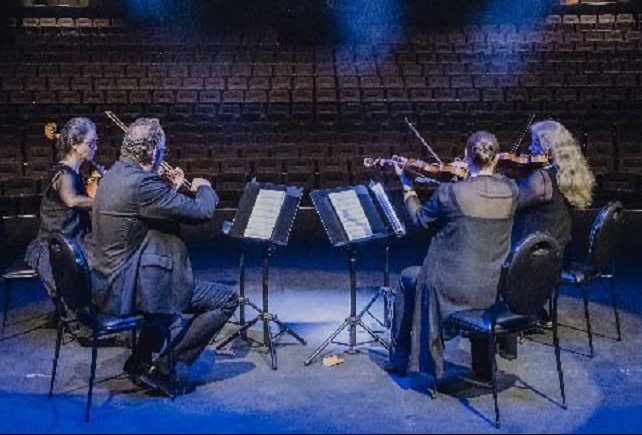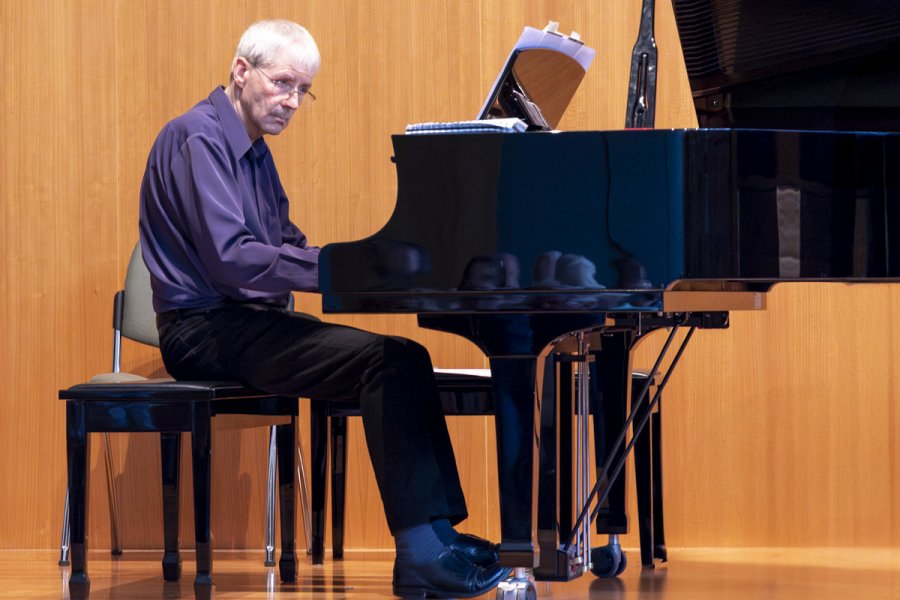Music / Acacia Quartet. At Tuggeranong Arts Centre, May 22. Reviewed by TONY MAGEE.
BORODIN’S “String Quartet No. 2” is famous in its own right, but made even more so by having two of its themes borrowed for use in the musical “Kismet”.
A loving gift for his wife, it contrasted dramatically with Shostakovich’s “String Quartet No. 8”, which is dedicated to the victims of war.

In a brilliant piece of programming, these two major Russian works were linked with “Dancing in St Petersburg” by American/Australian composer Jessica Wells, whose piece captures and re-imagines themes from other works by Borodin and Shostakovich.
The Borodin opened with a playful melody from Anna Martin-Scrase on cello, taken over by Lisa Stewart on first violin, then Doreen Cumming on 2nd violin and sweetened into phrases of pure delight.
With excellent intonation and wonderful dynamic shadings, the quartet captured the warmth, happiness and love that drips from the pages of this melodic and charming work.
The oft neglected viola came through with many shining moments of beautiful melody, played with sensitivity and style by Stefan Duwe.
In fact, beautiful melodic phrasing combined with excellent intonation were time and again the features of this wonderful performance, which finished with a passionate sustained final note from 1st violin.
“Dancing in St Petersburg” begins with a pastiche of musical ideas referencing Borodin’s “Prince Igor”, before delving into traditional Turkish “makim” scales which include quarter tones and odd-metered rhythms.
The second movement entitled “The Bolt’ musically explores a mechanical factory scene, a slow drunken waltz, a tango, a Charleston, a polka and a Communist march.
The players delivered edgy, in-your-face bold and dramatic lines, contrasted with beautiful viola melody set against pizzicato accompaniment from the other strings.
Shostakovich completed his “String Quartet No. 8” in 1960, while visiting Communist East Germany. His dedication, “In Remembrance of the Victims of Fascism and War” refers specifically to the destruction of Dresden in 1945.
The five movements alternating as “largo” or “allegro”, are contrasted with sections marked “attacca”. The musical boldness and timely reminder of current world events was not lost on the audience.
Throughout the performance, one could feel the despair, heartache, pain and suffering as the players lived and breathed every moment, their bodies almost shaking with grief.
No-one can know exactly what Shostakovich was thinking when he penned the final “largo” movement, but the Acacia Quartet spoke to me deeply, of a solder, mortally wounded, struggling to breath, trying to crawl his way to some kind of relative safety – life ebbing away, his strength failing, his final thoughts turning to a family he will never see again.
Driving home, trying to recover from the shocking revelations of the Shostakovich, I found myself reminiscing about the late Canberra-based jazz and cabaret diva, Gery Scott.
She had a piece she absolutely loved singing, which would sometimes just occur to her on the spur of the moment during a performance. Gery would turn to me and say “Are you ready, darling? Right, here we go. A-one, two three, four: “Baubles, bangles, hear how they jing, jing-a-ling-a…’”
Who can be trusted?
In a world of spin and confusion, there’s never been a more important time to support independent journalism in Canberra.
If you trust our work online and want to enforce the power of independent voices, I invite you to make a small contribution.
Every dollar of support is invested back into our journalism to help keep citynews.com.au strong and free.
Thank you,
Ian Meikle, editor








Leave a Reply